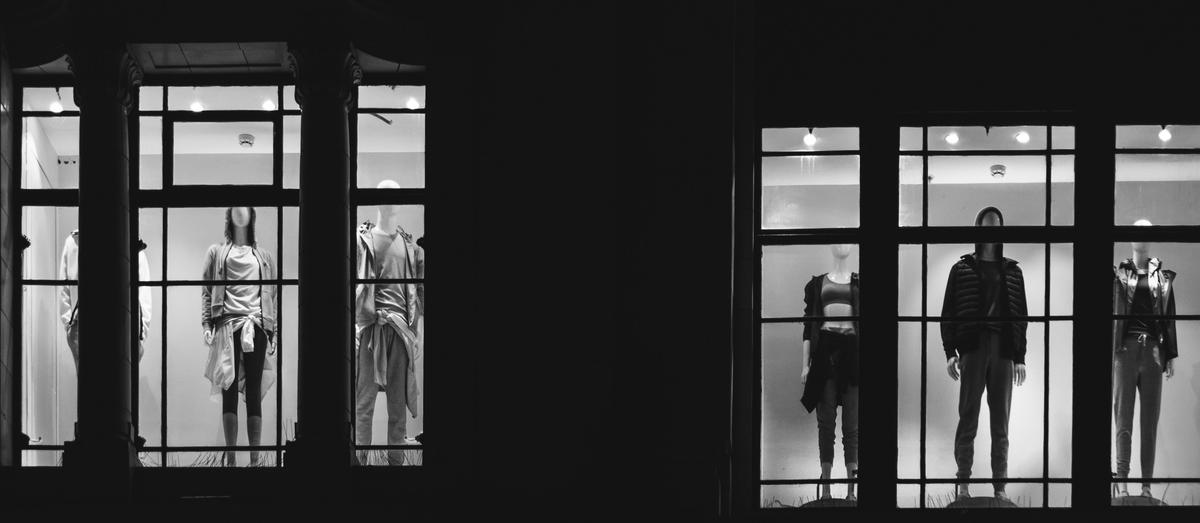I was up in Scotland last week for a business meeting. The train cut through the beautiful English countryside from London to Glasgow and it was cathartic to see the fields and the expanse of space after months of home-based working, with our world having been so reduced geographically.
The driver led us from the station on a walk to his car several blocks away. We passed closed shop after closed shop. Even retail titan Marks & Spencer was gone. Limited train travel meant limited footfall around the station, and the stores couldn’t afford to wait for the virus to pass. Ditto at Eurostar hub St Pancras — Fortnum Mason and John Lewis, both British stalwarts for tourists and middle-class travelers, gone. And while the media is more geared to the “we’re coming out of this now” narrative, my travels beyond home made me wonder what exactly will we be coming out with?
If Glasgow was any indication, we will be emerging with heartbreak and a string of empty storefronts.
There is the wonder of the human spirit, however. A real need to get control back, no matter what challenges us. Traveling home from the office yesterday through London’s Oxford Street, I was struck by another retail picture — it was rammed with people shopping elbow to elbow and carrying bags and bags of purchases. We have a deep desire for human connection, even if it’s just a shared eye roll with the person in line behind you or observing someone down the rack examining the same blouse you passed over moments ago. We have been robbed of so much of our in-person experiences, big and small. Can this primitive desire for social interaction protect the retail world, ensure stores do flourish again, reinvigorating our high streets and shopping malls as positive commercial beacons?
Data shows global retailers generated $4 trillion in 2020 through their physical stores. That’s set to rise to $6.5 trillion by 2024. Shopping isn’t gone. Shopping has shifted. The utility of e-commerce blossomed during the pandemic, but its 1:1 transactional communications style stirred our nostalgia for social shopping. I believe that we will come out of this pandemic with a greatly expanded commerce landscape, bolstered by three distinct shopping drivers:
1. Utility Shopping
The dance between shopping for what we need, and shopping to make us feel good is continuing, albeit to a different beat from pre-Covid. We’ve seen the rise of online DTC businesses in the last 18 months (ecommerce now accounts for 19 percent of all global retail sales up from 16 percent in 2019) and the blessed relief of being able to shop and get what we need delivered to our door while the outside world has been closed. I’ve written before about the rise of “super-solver” brands where companies have nailed accessibility, agility, and affordability via their online offer to help us be self-sufficient. Smart online businesses, such as exercise providers and grocers have hugely benefited, and the speed and convenience of this has changed habits for many fundamentally.
2. Social Shopping
The rise in utility shopping did not kill the need for social shopping; if anything, it fueled the flame. According to Edelman’s Brand Chief and Retail Strategist, Gi-Gi Downs, the social aspect of shopping is critically important, especially where it concerns our mental health. She pointed out that research carried out even before the pandemic suggested that interactions with in-store salespeople could satisfy some of the need for connection from consumers who experience loneliness.
We see an ‘and’ not an ‘or’ in how we will shop as the world recovers. We are loving the DTC availability, but we also need to get into stores to have the whole sensory experience. Gi-Gi explains that “Shoppers have an innate need to touch products and the sensory stimulation of visiting a shop is well documented. As our world becomes increasingly digital, there is a growing need for the tactility of the shopping experience which can increase the likelihood of purchase.” Speaking at the recent ANA Masters of Marketing Conference, Marisa Thalberg, EVP Chief Brand & Marketing Officer of Lowe’s Companies Inc, revealed that the need for emotional connection did help people go into their stores — even holding Valentine’s Day events in their aisles — and while Covid did drive their dot com business, additional services like curbside and in-store collect options helped too.
3. Revenge Shopping
Forbes magazine first covered the subject of revenge shopping identifying that “the desire to make up for lost spending was first seen in China. “Revenge Shopping” is a literal translation of a Chinese phrase describing that country’s post-lockdown rush to purchase luxury items. In April, WWD reported that the Guangzhou Hermès boutique flagship had sold $2.7 Million worth of merchandise in its first day of trading after lockdown restrictions were eased. The store even sold a diamond-studded Birkin.
More closely tied to the human spirit and our subconscious, revenge shopping is a combination of both utility (need) and social (desire).
Drawing these drivers out over the long-term, we can see the growth of social shopping — the joy of meeting friends and strolling around the high street or the mall as an event — add lunch or a drink, and it’s a day out. Then there’s the everything is normal utility shopping — reassuring to return to a routine that was established pre-Covid, whether that be habitual days for a grocery store blitz, salary day fashion shopping, seasonal trend or occasion shopping (weddings, I hear are on the rise). Finally, there’s the need to make us feel good via catching up on lost time or positive impact — consciousness shopping.
In looking for an example of what the future of shopping might look like, I found that Edelman’s recent work for Primark in the UK nailed it. It wins back brand love under the banner of “Towards a better planet; Affordable for all” — a simple, transparent, and motivating commitment. It speaks to utility through affordability, social through the collective “all,” and consciousness through sustainability. Key to big commitments like this one, of course, is trust. Trust is ultimately what will drive the growth of the shopping sector. Trust that we are safe as we emerge and spend time in public spaces. Trust in the retailer to behave responsibly as sustainable partners in business and production. Trust built with the next generation of shoppers who seek clarity around environmental and social issues. Trust in the provenance, service, and quality of ecommerce purchases. Trust in stores and suppliers to deliver good experiences, quality products, and consistent service.
So, while there has been commercial heartbreak for brands and retailers, there is also hope. We want our world to thrive, to progress, and for this virus ridden year to be in the past. We want to have experiences that make us feel connected, and we want the emotional and practical benefits that retail gives us. We will move away from the heartbreak and towards a renewed love of connection in store, where consumers will always fall a little bit more in love, and spend a little more than they intended to.
Jackie Cooper is Global Brand Chief Officer.




